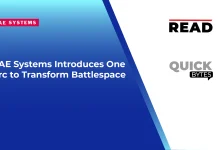Hi Daniel, could you tell us about your journey in MarTech? 
I started my career in strategy consulting, which was exciting and challenging but ultimately unfulfilling. You invest so much energy and effort into solving an important problem for your client, but oftentimes you don’t get to see the results because you’ve moved on to the next client, or it could take years for your recommendations to play out. I then moved to investment management to more use of my analytical skills to allocate money. What I didn’t realize is that in finance it takes even longer to see the fruits of your labor and the benefits you’ve brought to clients than it does in strategy consulting!
While in finance I started moonlighting for a wine tech startup. That’s where I got hooked on the adrenaline rush of startup life, where a company can grow so quickly in a matter of months. I went to business school to transition my career into startups and haven’t looked back. After failing to get my own startup off the ground at MIT Sloan, I joined Seismic, a B2B enterprise SaaS company, as head of marketing and I’ve been leading marketing efforts at high growth B2B marketing, sales, and CX tech companies for the past 9 years.
What challenges did the Covid-19 pandemic pose for your marketing team?
Like for many teams, the early months of the pandemic ushered in an incredible amount of uncertainty for us. We all had to make the switch to working from home. We had to keep tabs on the latest updates on how to keep ourselves and each other safe. We had to find new ways of interacting with and supporting one another.
For us at Simplr, it also ushered in a time of unprecedented growth in our business. Our solution helps brands engage their customers across digital channels in a manner that is more personalized and effective than ever before. So the sudden step function growth in digital interactions caused by COVID meant a lot more brands were looking at Simplr to help them get through it.
The combination of COVID-related uncertainty and rapid growth meant that I needed to be super cognizant of how each team member was doing from a mental health and wellbeing standpoint. We want to lift each other up here at Simplr, and the pandemic gave all of us a crash course in learning how to do so.
What sets Simplr apart from the competition?
Existing CX models rely on outdated contact center models and chatbots that too often disappoint the customer. Simplr offers a new path forward which takes the best of both models while eliminating the worst parts.
Contact centers consist of a full-time, inflexible workforce that make it difficult to meet the changing needs of customers. Employee churn is high and satisfaction is low, resulting in consistently poor customer interactions. Meanwhile constant employee training and onboarding remains a major expense.
Chatbot vendors have become known in the market as increasingly overpromising and under delivering in terms of the quality and volume of customer interactions they can facilitate. GOMoxie found only 22% of consumers have a positive impression of chatbots.
Simplr provides our customers with a uniquely talented and scalable network 100% composed of gig workers. What makes Simplr so special is that those gig workers are enabled by an AI-based technology platform that instantly makes them the best customer service specialists. This allows our customers to immediately expand their customer service capacity and engage their consumers with speed, empathy, and precision.
Simplr’s technology platform is key to its Human Cloud customer service model, allowing gig workers to take on digital customer service tickets with ML-enabled guidance that’s provided in-the-moment. Meaning, without training, a gig worker can log into the platform and take a ticket from any brand and immediately respond based on the guidance that appears on their screen, whether it’s a question on a return policy, product availability, order status, etc.. They’ll have the answers needed and they’ll be served up in the brand look and tone.
How do you envisage the CX landscape evolving, in the years to come?
Well, consumer behavior is changing at a breakneck pace, and it continues to trend towards people demanding quicker responses, more personalized interactions with brands, and less patience for CX organizations who can’t easily solve their inquiry. We call this the era of the NOW Customer.
The key for CX organizations to succeed in the coming years is to be agile. How can you most quickly respond to surges in customer inquiry volume? How can you adapt to new digital channels that might suddenly become popular? How do you deal with contact center churn rates during this Great Recession?
Our CEO Eng Tan and I actually just published a book on that exact topic, Experience is Everything. We interviewed almost 20 CX leaders across different industries to get their thoughts on the future of CX. I’d recommend it to anyone looking to glean insights from some of the most innovative brands in the world when it comes to developing positive relationships with consumers.
What 3 things would you advise business owners to do, to optimize their digital outreach?
- Ensure a seamless handoff between automated solutions and human agents. Chatbots work well in many situations, but in the situations in which they are not working for the consumer, brands must set up processes that allow for a seamless customer experience during such escalations. There’s nothing more frustrating than having to repeat yourself as a customer.
- Personalize every interaction possible. The NOW Customer wants to feel like a real human being. They don’t want to feel like a lead or a demographic. Finding ways to infuse real personal connections with the customer can make or break modern customer experiences.
- Leverage your current customers as an acquisition channel. Developing exceptional rapport with existing customers can lead to new customers. The proliferation of new digital channels over the past few years means that every happy customer has a microphone to tell others about your brand. For those who don’t prioritize CX, this can potentially spell disaster in the form of brand detractors airing their grievances. But those who invest in their customers will see an incredible return– not only in customer lifetime value and loyalty, but in new customer acquisition as well.
As a marketing leader, what are your thoughts on how ROMI and its use as a metric to define success?
It’s fairly well established now that, as a marketing leader, if you’re not finding ways to tie your efforts to sales and won deals, then you’re not doing your job. So regardless of what way you choose to measure marketing ROI, it must include those revenue-focused metrics.
Interestingly, I would argue that CX leaders need to think the same way. There are a plethora of ways that positive customer service and support interactions result in more revenue for the company. But far too few CX leaders take advantage of them. This is another major topic we discuss in Experience is Everything.
Your top pick for a book on marketing that everyone should read?
Is it too self promoting to say Experience is Everything? If so then I would recommend Tony Hsieh’s book Delivering Happiness, because great customer service is the best marketing strategy.
Could you name one other marketer that you would like to see featured here?
Pendo CMO Joe Chernov.
Where do you see Marketing Automation going? How will it impact the traditional sales and marketing channels?
Marketing automations will likely follow a lot of the trends we’ve already discussed. Those platforms will continue to find ways to make digital interactions more personalized and offer a better overall experience for consumers. This should also hopefully help deliver better qualified leads to sales teams, and ones that have a better initial overall impression of the company’s brands and products.
Could you name the Top 5 apps/platforms you use for marketing?
Gong, Seismic and Hubspot are hugely successful for us!
Thanks Daniel!
Read More: AI-Powered Translation Technology Can Enhance Business Performance, Says Unbabel CTO João Graça




